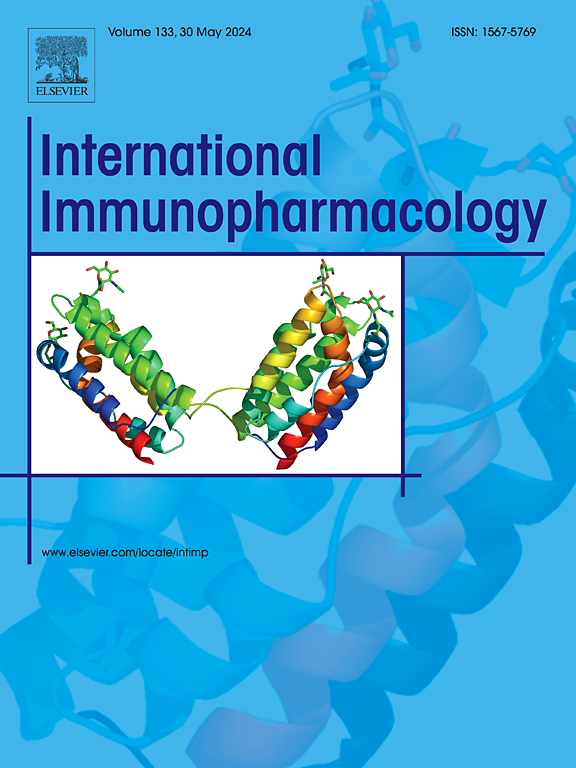Pharmacological and Computational Investigations of Isosteviol 16-oxime for Attenuating Streptozotocin-induced Diabetic Neuroinflammation utilizing rat as Animal Model
IF 4.8
2区 医学
Q2 IMMUNOLOGY
引用次数: 0
Abstract
Diabetic neuropathy (DN) is microvascular issues caused by diabetes mellitus (DM) that damages peripheral nerve system. DN-induced pain progression and persistence occur due to many risk factors, including as increased TNF-α, NF-κB, and COX-2 levels. It was investigated whether Isosteviol 16-oxime (IO) could protect against DM-induced neuropathic pain. For this purpose streptozotocin-induced diabetic rat model was employed. After four weeks of streptozotocin injection, IO was given till the sixth week. On days 28, 31, 35, 38, and 42, behavioral assessments were done before and after Streptozotocin administration. After six weeks of streptozotocin treatment, rats were sacrificed, and spinal cord and sciatic nerve samples were taken for molecular analysis. The interaction kinetics and binding affinities of IO with TNF-α, NF-κB, and COX-2 targets were studied using computational methods. IO intervention significantly (P < 0.001) reduced mechanical allodynia and thermal hyperalgesia. The treatment of IO led to increased GSH, GST, and CAT concentrations in the spinal cord and sciatic nerve, while reducing LPO levels (P < 0.001). IHC and Nissl staining showed that IO successfully reduced DN-induced pathological changes. IO also down regulated the expression of inflammatory mediators TNF-α, NF-κB, and COX-2, suggesting its potential as a neuroprotective drug. In comparison to pregabalin, IO demonstrated enhanced antinociceptive properties and diminished hyperalgesic effects. Consequently, IO exhibits a more pronounced reduction in pain perception and inflammation. Our investigation found that IO may protect against DM-induced neuroinflammation by suppressing cytokines and increasing antioxidant levels. More research is needed to determine the exact mechanism of IO in neuroprotection and pain reduction.

求助全文
约1分钟内获得全文
求助全文
来源期刊
CiteScore
8.40
自引率
3.60%
发文量
935
审稿时长
53 days
期刊介绍:
International Immunopharmacology is the primary vehicle for the publication of original research papers pertinent to the overlapping areas of immunology, pharmacology, cytokine biology, immunotherapy, immunopathology and immunotoxicology. Review articles that encompass these subjects are also welcome.
The subject material appropriate for submission includes:
• Clinical studies employing immunotherapy of any type including the use of: bacterial and chemical agents; thymic hormones, interferon, lymphokines, etc., in transplantation and diseases such as cancer, immunodeficiency, chronic infection and allergic, inflammatory or autoimmune disorders.
• Studies on the mechanisms of action of these agents for specific parameters of immune competence as well as the overall clinical state.
• Pre-clinical animal studies and in vitro studies on mechanisms of action with immunopotentiators, immunomodulators, immunoadjuvants and other pharmacological agents active on cells participating in immune or allergic responses.
• Pharmacological compounds, microbial products and toxicological agents that affect the lymphoid system, and their mechanisms of action.
• Agents that activate genes or modify transcription and translation within the immune response.
• Substances activated, generated, or released through immunologic or related pathways that are pharmacologically active.
• Production, function and regulation of cytokines and their receptors.
• Classical pharmacological studies on the effects of chemokines and bioactive factors released during immunological reactions.

 求助内容:
求助内容: 应助结果提醒方式:
应助结果提醒方式:


